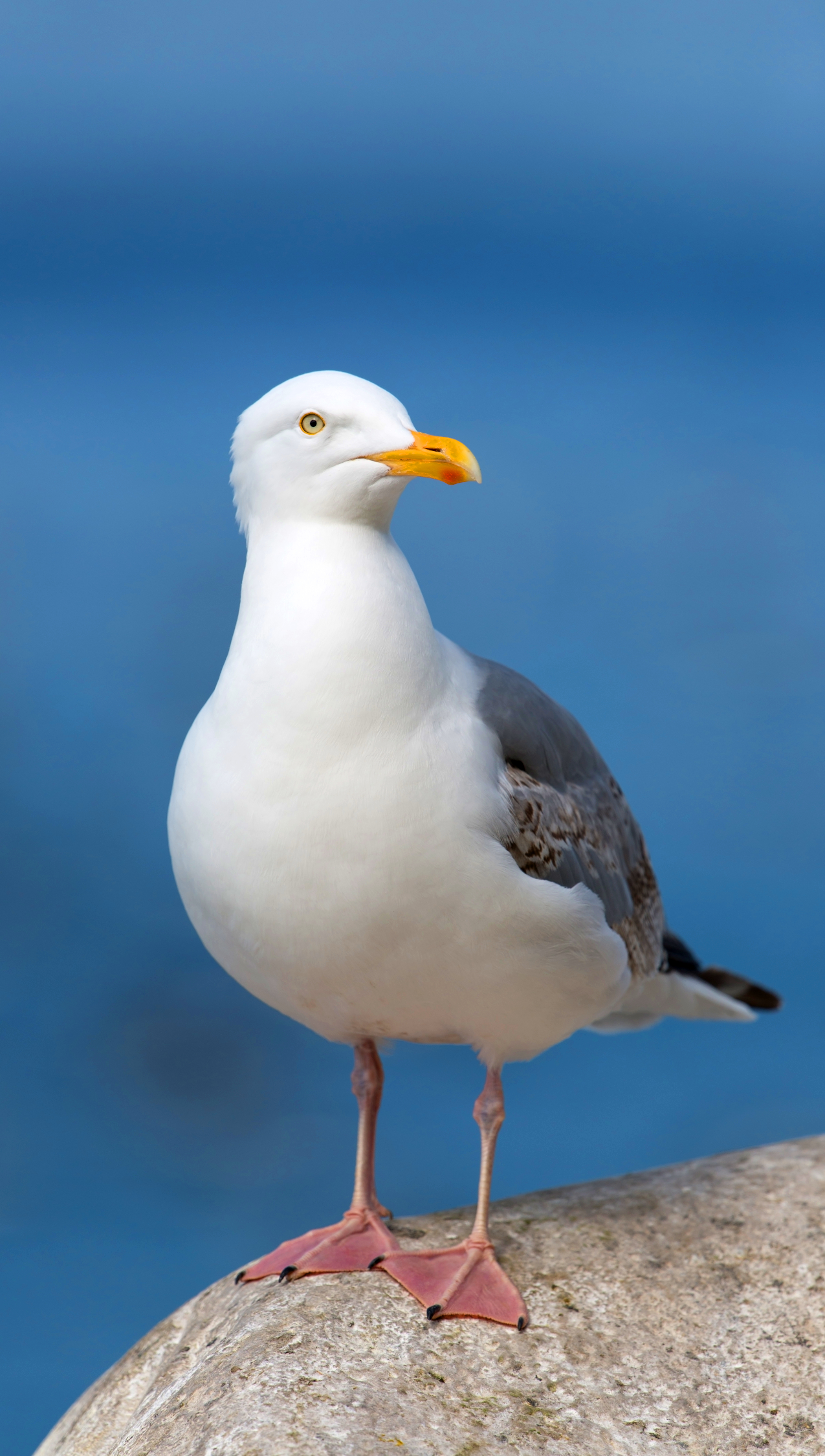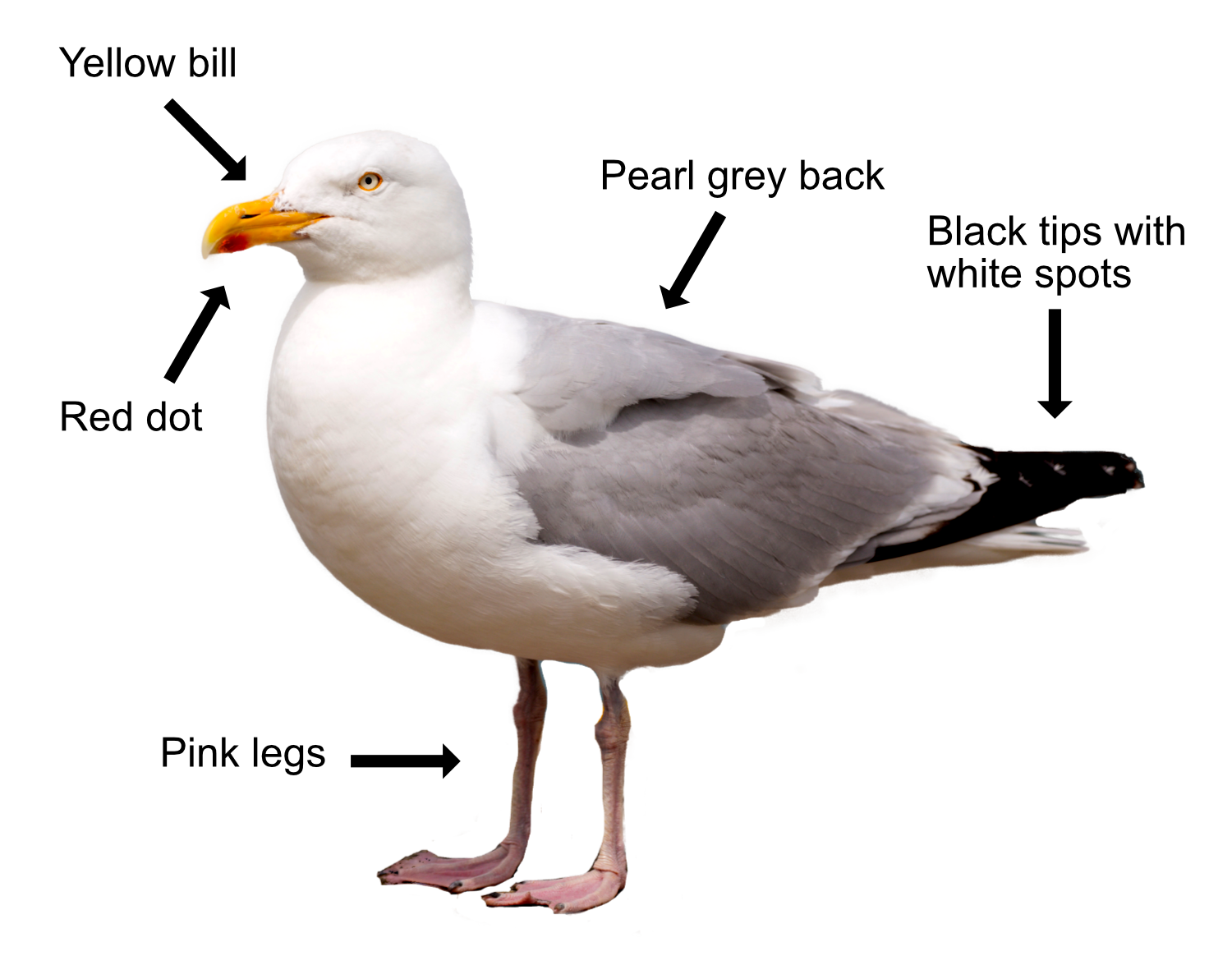
The Herring Gull is a familiar gull round our coasts whose laughing "kyow, kyow, kyow" cry is everybody's sound of the seaside. It is seldom seen far out at sea, preferring to steal your chips on the beach instead. The combination of the Clean Air Act (forbidding the burning of rubbish) and dwindling fish stocks have brought many Herring Gulls inland to our rubbish tips, farmland and parks, though they are most concentrated at the seaside as this is where all the unsuspecting, chip eating tourists are.

They have a pearl grey back and upper wings, light underparts, a fierce-looking eye with a yellow iris, a heavy yellow bill with a red dot (ideal for getting into bin bags), and pink legs. Their wings have white spots on the black tips. The colour of a gull's legs is one thing that helps you tell them apart, which is annoying since you can't see them most of the time! The Herring Gull's feet are so tough that they have no problem standing on the perching spikes designed to keep them off buildings.
Herring Gulls eat just about anything: carrion, discarded fish from fishing boats, small mammals, eggs, shellfish, human rubbish (especially if it is a bit rotten), and chips, lots of chips. With the help of streetlights, the Herring Gull is happy foraging all night, ripping into black bags for tasty morsels. They have extremely keen daytime and night-time vision, superior to ours, and can see ultraviolet light. All this is great for bin raiding. They also have excellent hearing and a sense of taste that is particularly responsive to salt and acidity, which is why they go mad for chips with salt and vinegar. All these eating habits can make them a bit of a nuisance.
Herring Gull flocks have a loose pecking order, based on size, aggressiveness, and physical strength. The males are usually dominant in feeding and boundary disputes, while the females are dominant when selecting the nesting sites, ruling the house like ladies everywhere! Traditionally, Herring Gulls nested in noisy cliff-based colonies but are increasingly nesting on roofs in towns and cities and, with that hard stare, showing little fear of humans. Nesting starts in April on a mound of vegetation that is built by both adults. The 2-4 eggs (though usually 3) hatch after 28 days and the young leave the nest after 3 days for a waddle about to admire the city view. The youngsters peck at the red spot on mum and dad's beak to make them regurgitate food. Being mottled brown, the young birds are well camouflaged from predators. They can fly after about 35 days and quickly become independent chip thieves. The young gulls take 4 years to get their full adult plumage, which may seem a long time, but not when the oldest known Herring Gull lived to be 31 years old.
There are about 140,000 pairs breeding in Britain rising to 740,000 in winter when large numbers of Scandinavian birds come over for a bit of battered cod having had enough of pickled herring. When numbers are taken as a whole, the Herring Gull is declining across the country, despite their increase in urban areas. They are now protected by law and you have to get a special licence to remove them if they colonise your roof and cover it in poo.
Their Latin name is 'larus argentatus' where 'larus' means 'gull' or 'large seabird' and 'argentatus' means 'decorated with silver' as their backs are silver grey.